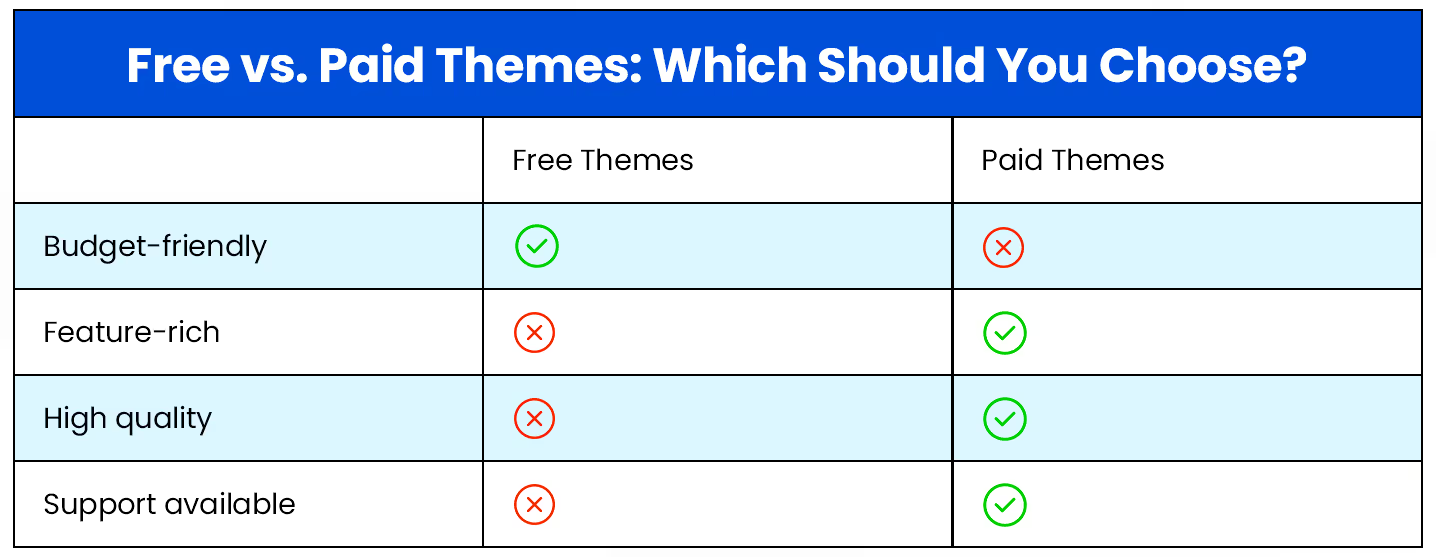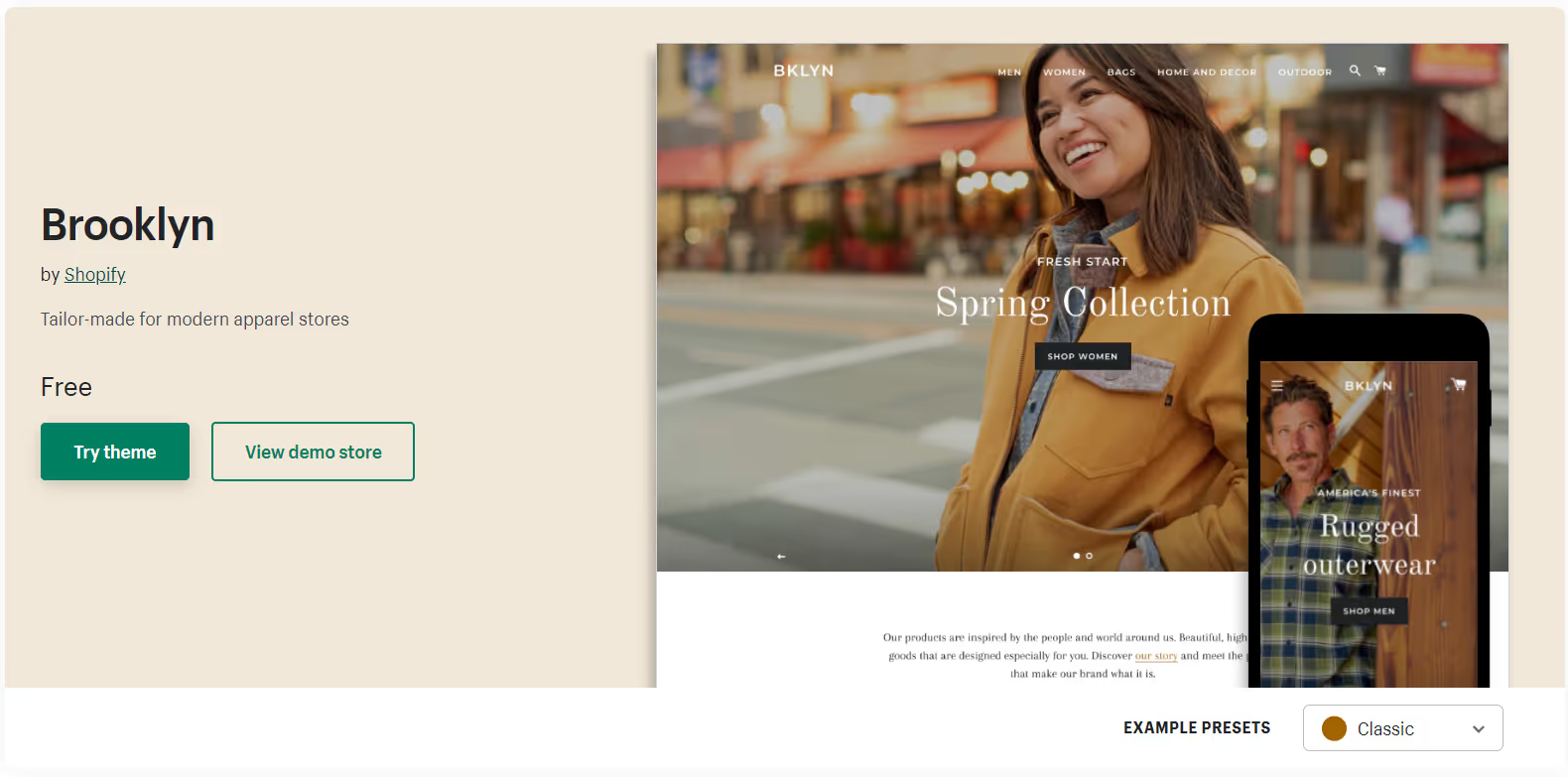If you’re building an ecommerce store, Shopify is one of the most powerful platforms available to you. It’s flexible, packed with features, as well as extremely user friendly. But it can be hard to choose the right theme for your store from the thousands of free and paid Shopify themes that are available. Which theme you select is an important decision, because the design of your ecommerce store plays a critical role in how users experience and interact with your brand. Positive user experiences lead to more conversions and more revenue. Here, we’ll list some of the factors you should consider when choosing a theme for your ecommerce store.
How to choose the right theme for your Shopify store
Shopify themes are templates that define the look and feel of your ecommerce store. These determine your website’s layouts and styles, and most importantly, affect the user experience of your store. They also impact your branding. Here’s how to choose the right Shopify theme for your ecommerce store.
1. Identify the functionality that’s most important to you.
Think about the features that will be most important to your customers. Try to find a theme that includes at least 80 percent of these. For the remaining 20 percent, you can hire a developer or agency to build custom features for you. Do remember that you won’t be able to customize each aspect of each page, so your theme should have the right structure, sections, and drag-and-drop elements that suit your needs.

Once you’re in the Shopify theme store, you can search all the themes by features, such as quick buy, sticky navigation, product filtering, etc. Make sure you also enter the demo preview and test the themes yourself to discover any additional features that may not be listed on the theme preview page. Read: Migrating to Shopify - Key Considerations
2. Consider your products and catalog size.
Finding the shopify theme that works best for you also depends on the number of products you have. If your ecommerce store has a large number of products, you’ll need a theme that allows you to effectively display these, create categories, and offer search and filtering options to users. For businesses with a smaller number of products, a less feature-rich theme may also work.
3. Consider your budget.
The Shopify theme store offers a number of free themes by Shopify and paid themes by developers. Your budget will determine whether a free or paid theme would be better for you, and which features are absolutely critical to your business and which features are nice-to-haves.

Free themes are great for testing your ecommerce store. Be warned though: free themes may lack some functionality and adequate support. Premium themes offer significantly more functionality, and are evaluated by Shopify for quality and functionality, as well as compliance with Shopify’s policies. If you are choosing to go with a premium theme, make sure you select one from a respected third-party developer. Also, check what kind of support you will get after you make your purchase. In case your site breaks because of a new plugin being added or a configuration being changed, will you be able to reach out to the theme developer for support? You can try to contact the developer and see if they respond, as well as how long it takes for you to get an answer to your query. Make sure you select a theme for which the developer offers quick and responsive support. You can also check reviews from people who have used the theme on their websites.
4. Consider your design needs.
Within the Shopify theme store, you can search by industry or collection to find themes that are designed to suit your niche. Also see what kind of featured images you’d like to use on your website — do these work with your chosen theme?

The free Brooklyn theme (Source: Shopify)Next, check how your products look in this theme. Depending on whether your product catalog and image sizes are large or small, ensure that the theme you’ve chosen gives you enough space to display images properly. Since design is a big factor in influencing conversion, also check how other key elements will be displayed, such as your logo, navigation, CTAs, and footer.
5. Choose a theme that’s mobile optimized and lightweight.
Make sure you pick a theme that’s mobile responsive and easy to use. Check that it properly displays your images on mobile and allows you to add clear CTAs. Do keep in mind that the more features your ecommerce store has, the slower its performance will become. So keep your store as lean as possible to ensure the best experience for your audience. Also ensure that your theme uses optimized images. Read Embracing Mobile Commerce for Breakneck Growth
6. Choose a theme that’s optimized for conversion.
Choose a theme that offers your store visitors a great user experience — for instance, on the product detail page, it should allow them to easily see all the important details about a product and add it to cart without having to scroll a lot.

The District theme allows shoppers to see the same product in different colors (Source: LitExtension)Since almost 70 percent of users across industries abandon their shopping cart before making a purchase, you also need to make sure that the checkout process is optimized. Your Shopify theme should offer easy navigation and purchase, without forcing users to create an account. Additional features like a progress bar can also help to improve the checkout experience for shoppers.
7. Your theme should also be SEO-friendly.
An SEO optimized theme will allow you to easily reach a wider audience with your ecommerce store and cut costs on other kinds of promotions such as paid ads and social media promotions. Check that your theme has a clear navigation that’s ideally placed above the fold, as well as built-in SEO tools and features like customized metadata, support for featured snippets on Google, and social sharing buttons.
8. Pick a theme that offers support for translation.
If you plan to operate your store in multiple geographies, make sure that you pick a theme that offers language and translation support as well as hreflang. Other features that can help with localization include a currency converter. Ideally, this should be one that automates the calculation of tax, shipping charges, etc. However, in case one is not available with the theme you have selected, you can also get a third-party tool that allows currency conversion.
The right theme will help you boost customer retention
An attractive Shopify theme will help you attract and retain customers in a market with cut-throat competition. While it can be difficult for store owners to find the time to do enough research and select the best theme for their store, by considering all the factors we’ve listed above, you can make an informed choice about your theme, carefully selecting one that offers the right balance between functionality, aesthetics and user experience. Read 7 Ways to Encourage Impulse Buys on Your E-Commerce Platform
.avif)










.jpg)









